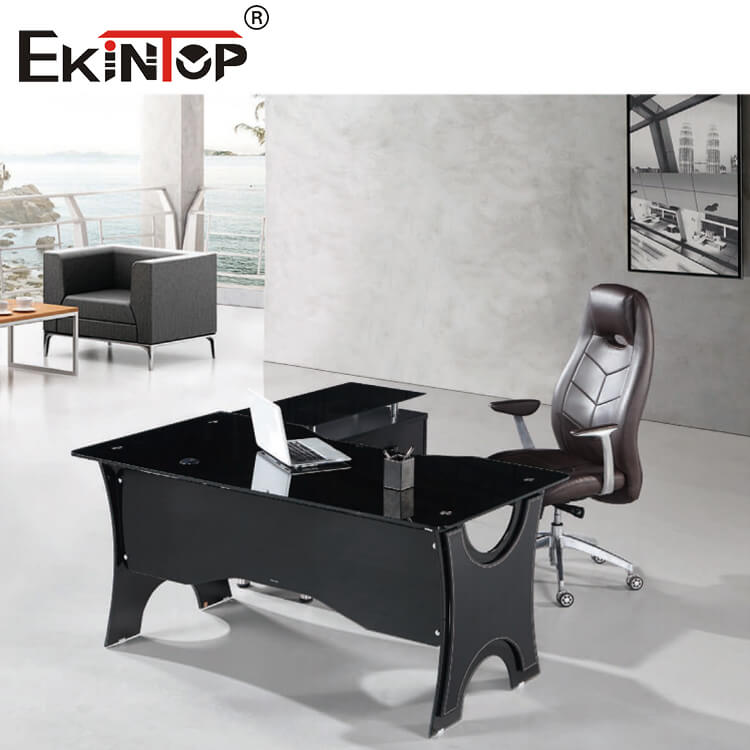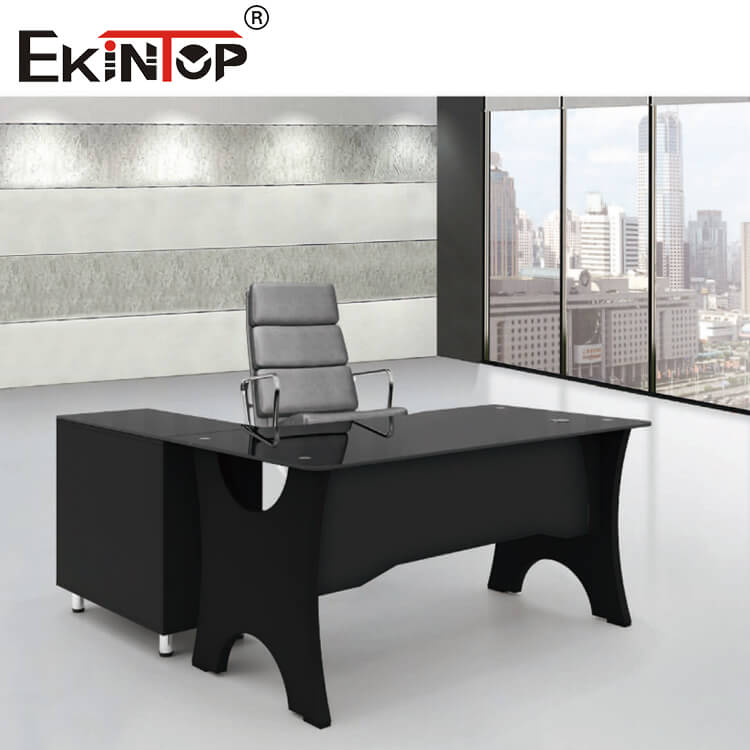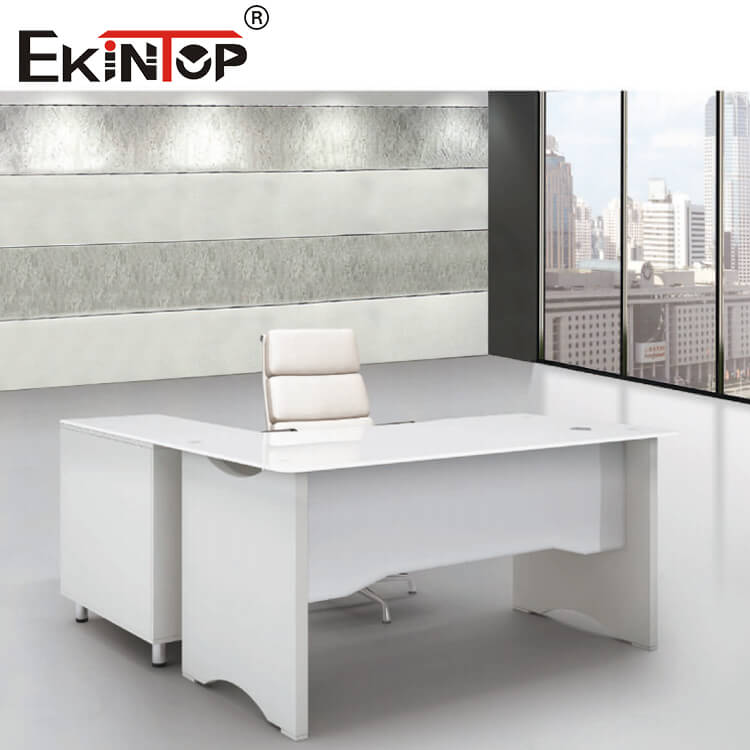
October 15,2025
admin
In the atrium of Apple's spaceship headquarters, a 60-meter-long curved glass office desk reflects the Californian sunlight, where engineers' reflections and holographic projection data streams intertwine. This million-dollar glass installation not only represents the aesthetic pursuits of top tech companies but also signals a new era in office revolution—where traditional glass material meets quantum coatings and smart interactive technology, transforming modern office desks into sophisticated interfaces that carry human digital civilization.
The fate of ordinary soda-lime glass was completely rewritten in the 21st century. Corning's sixth-generation Gorilla Glass, through ion-exchange processes, enhances its bending strength to 20 times that of traditional glass, maintaining a deformation accuracy within 0.3mm even under a load of 200kg/m². Tokyo University’s Materials Laboratory developed transparent microcrystalline glass with a Vickers hardness of 9.2GPa, comparable to sapphire’s physical properties, making it possible to drag a coffee cup directly across the surface.
In Shenzhen’s minimalist tech office, engineers are fine-tuning smart glass desktops equipped with graphene heating films. This transparent conductive layer, just 50 micrometers thick, can achieve precise temperature control in the range of -20°C to 60°C, eliminating the discomfort of cold desks in winter. More revolutionary is the dynamic fogging glass developed by MIT’s Media Lab. By applying a 24V voltage, the glass can switch between transparent and frosted states in 0.3 seconds, creating instant privacy boundaries in open office spaces.
Environmental attributes have become a new battleground. A Dutch startup developed bioactive glass, with a photocatalytic coating on the surface that decomposes formaldehyde molecules under natural light, achieving a purification efficiency of 97.8%. Meanwhile, German chemical giant BASF launched carbon-capture glass, which can absorb 2.3kg of CO2 per square meter of desk surface annually, equivalent to the ecological benefit of planting 1.5 full-grown spruce trees.

The creative vision of Microsoft's Surface Studio has reached its ultimate evolution on a glass desktop. Samsung Display’s QLED transparent panel technology embeds a 4K resolution display within a 12mm glass interlayer, paired with millimeter-wave radar for hovering touch control. A designer’s finger glides across the seemingly ordinary glass surface but can precisely control a 0.1mm brushstroke, creating an experience where virtual and real elements blend, reshaping industrial design workflows.
At ETH Zurich’s Smart Office Lab, an augmented reality glass desktop works in conjunction with Hololens 2 to form a spatial computing matrix. When architects project 3D models onto the desk, structural stress data is rendered in real-time as colorful heatmaps, with material deformation simulation precision reaching engineering-grade ±0.05mm. This mixed-reality workstation improves design review efficiency by 400%, reducing error rates to 1/8th that of traditional CAD methods.
IoT hub functions are being integrated into glass substrates. Corning, in collaboration with Qualcomm, developed Smart Surface technology, embedding a micro-sensor network in the molecular layers of the glass. The system can automatically identify placed items and activate corresponding functions: a coffee cup contact area triggers a temperature-regulated ring, a laptop area lifts a wireless charging module, and when documents exceed a stacking limit, a sorting reminder is automatically sent.

The "Transparent Office" experiment at the Museum of Modern Art in New York revealed that the light transmittance of glass desktops correlates positively with team collaboration efficiency. When the transparency of a desk surface increased from 70% to 92%, cross-departmental communication frequency rose by 53%, and decision-making cycles were shortened by 37%. This visual permeability is breaking down the power symbols of traditional cubicles, fostering a new, equal, and open office culture.
In a shared office space in Tokyo's Ginza district, electrochromic glass desktops switch functions based on the user’s identity. In freelancer mode, it displays the day’s to-do list; during team meetings, it transforms into a mind-mapping whiteboard; when investors visit, it immediately presents a financial data visualization dashboard. This adaptive characteristic increases the spatiotemporal value density of a single desk by six times.
Light control has become a spatial narrative language. The "Light Table" designed by Gensler in London uses a nano-prism array to break natural light into a seven-color spectrum, projecting corresponding color emotional fields onto the desk at different times of the day. Morning 470nm blue light stimulates creativity, 560nm green light in the afternoon stabilizes mood, and 620nm red light in the evening promotes deep thinking. This biological rhythm lighting solution boosts creative output by 28%.
At a startup in Berlin, a 1.2-meter-diameter circular LiFi transmission module is embedded beneath the glass conference table. Visible light communication technology transmits data at a rate of 224GB/s, and holographic projections above the table present a real-time stream of code waterfalls. Engineers use hand gestures to grab floating function modules in the air for assembly. This glass surface has evolved into a wormhole connecting the physical world and the digital universe. As the morning light crosses the smart dimming glass again, the desk adjusts to 70% transparency, finding the perfect balance between privacy and openness. This could be the ultimate metaphor for future office civilization: maintaining the transparency of boundaries while safeguarding the depth of thought.

Choose Ekintop Furniture, and what you receive is not just an office desk, but a gateway to the future of work methods.

